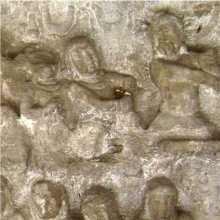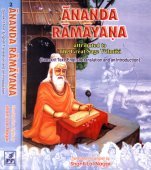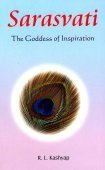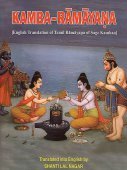Composing: 3 definitions
Introduction:
Composing means something in Buddhism, Pali, Hinduism, Sanskrit, the history of ancient India. If you want to know the exact meaning, history, etymology or English translation of this term then check out the descriptions on this page. Add your comment or reference to a book if you want to contribute to this summary article.
Images (photo gallery)
In Hinduism
Purana and Itihasa (epic history)
Source: Shodhganga: Elements of Art and Architecture in the Trtiyakhanda of the VisnudharmottarapuranaComposing (and solving) Riddles and Rhymes refers to one of the “sixty four kinds of Art”, according to the Kamasutra of Vatsyayana.—Cf. the Sanskrit Prahelikā.—Indian tradition, basically includes sixty four Art forms are acknowledged. The history of Indian Art covers approximately five thousand years which presents a rich and almost continuous record. The references of sixty four kinds of Kala (कला, kalā) are found in the Bhagavatapurana, Shaiva-Tantras, Kamasutra of Vatsyayana etc.

The Purana (पुराण, purāṇas) refers to Sanskrit literature preserving ancient India’s vast cultural history, including historical legends, religious ceremonies, various arts and sciences. The eighteen mahapuranas total over 400,000 shlokas (metrical couplets) and date to at least several centuries BCE.
In Buddhism
Tibetan Buddhism (Vajrayana or tantric Buddhism)
Source: Google Books: The Crystal Mirror of Philosophical SystemsComposing (i.e., serving the teaching by disseminating one’s writings) refers to one of the “Three Activities of Scholars” which are known in Tibetan as mkhas pa'i bya ba gsum.—The full list is: teaching, debating and writing.

Tibetan Buddhism includes schools such as Nyingma, Kadampa, Kagyu and Gelug. Their primary canon of literature is divided in two broad categories: The Kangyur, which consists of Buddha’s words, and the Tengyur, which includes commentaries from various sources. Esotericism and tantra techniques (vajrayāna) are collected indepently.
India history and geography
Source: Singhi Jain Series: Ratnaprabha-suri’s Kuvalayamala-katha (history)Composing (new poems or stotras) refers to one of the various methods of pursuing the spiritual life in the Hermitages (or Ashrams) of ancient India, as vividly depicted in the Kathās (narrative poems) such as Uddyotanasūri in his 8th-century Kuvalayamālā (a Prakrit Campū, similar to Kāvya poetry).—Page 87.20-28: Here is a vivid description of the intellectual and spiritual life in the Aśrama of a Jaina Muni. Uddyotanasūri gives a list of twenty-one methods of study and discussions and approaches to the tenets of religion and philosophy, [e.g., composing new poems or stotras] [...]. Also see the description of the hermitage of Divākara Mitra described by Bāṇa in the Harṣacarita.

The history of India traces the identification of countries, villages, towns and other regions of India, as well as mythology, zoology, royal dynasties, rulers, tribes, local festivities and traditions and regional languages. Ancient India enjoyed religious freedom and encourages the path of Dharma, a concept common to Buddhism, Hinduism, and Jainism.
See also (Relevant definitions)
Query error!
Full-text (+291): Upashayin, Viracana, Sudharana, Sadhanika, Vakyapaddhati, Kulaparampara, Grathana, Panasupari, Samadhana, Kalpana, Barata, Grantha, Shranthana, Granthana, Dhuri, Pedha, Putha, Racana, Samadhi, Shantavana.
Relevant text
Search found 206 books and stories containing Composing; (plurals include: Composings). You can also click to the full overview containing English textual excerpts. Below are direct links for the most relevant articles:
Buddhist Perspective on the Development of Social Welfare (by Ashin Indacara)
9. The Fourfold Characteristics or Classifications of Sīla < [Chapter 5 - The Accomplishment of Virtue and Wisdom]
Tattvasangraha [with commentary] (by Ganganatha Jha)
Verse 2676-2678 < [Chapter 24b - Arguments against the reliability of the Veda (the Revealed Word)]
Verse 1162 < [Chapter 16 - Examination of the Import of Words]
Verse 3147 < [Chapter 26 - Examination of the ‘Person of Super-normal Vision’]
Dasarupaka (critical study) (by Anuru Ranjan Mishra)
Part 1 - Mahendravarman—Author of the drama (Mattavilāsa-Prahasana) < [Chapter 3 - Prahasana (critical study)]
Yavanajataka by Sphujidhvaja [Sanskrit/English] (by Michael D Neely)
Verse 2.10 < [Chapter 2 - One’s Own Form of the Horās]
Yajnavalkya-smriti (Vyavaharadhyaya)—Critical study (by Kalita Nabanita)
Chapter 1.1b - Importance of composing the Smṛti Literature < [Chapter 1 - Introduction]
Chapter 1.2d - The Yājñavalkyasmṛti and its relation with other Ancient Literature < [Chapter 1 - Introduction]
Chapter 1.1e - The Major Smṛtis < [Chapter 1 - Introduction]
Kavyamimamsa of Rajasekhara (Study) (by Debabrata Barai)
Part 3.12 - Rājaśekhara’s concepts on Nature of Kāvya (poetry) < [Chapter 5 - Analyasis and Interpretations of the Kāvyamīmāṃsā]
Part 5.6 - Routine and time of composing Kāvya (poetry) < [Chapter 5 - Analyasis and Interpretations of the Kāvyamīmāṃsā]
Part 3.2 - Rājaśekhara’s views on Kāvyahetu (causes of poetry) < [Chapter 5 - Analyasis and Interpretations of the Kāvyamīmāṃsā]
Related products



